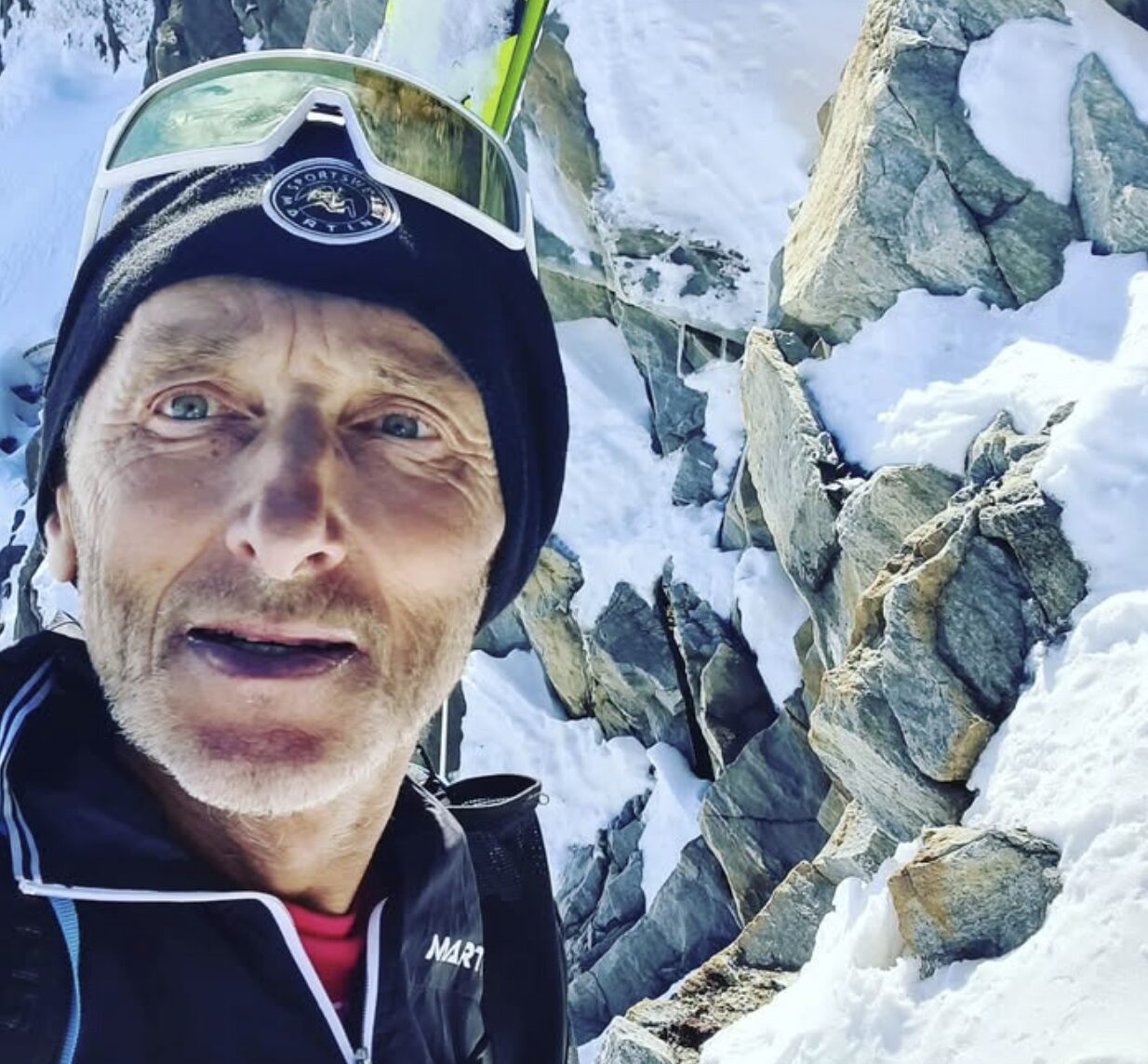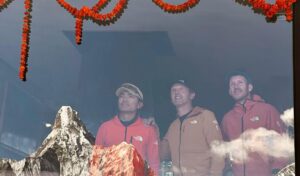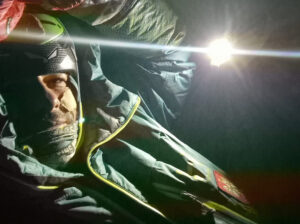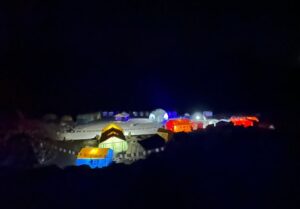An Austrian man lost his life coming down from the summit of Ama Dablam (6,812m) last Saturday.
There are no reports detailing what happened. A press release from Nepal’s Department of Tourism just mentioned that Martin Hornegger, 64, “went missing after reaching the summit.” Searchers found his body at the foot of the peak later that day, the Everest Chronicle reported.
It is unclear whether the deceased climber had Sherpa support. Sources at the DoT later told France24 that Hornegger was climbing the mountain with his daughter and son-in-law and that he “fell down while descending.”
Hornegger was a well-known entrepreneur in the mountain sportswear industry from Salzburg, Austria. He was also a highly experienced climber and skier.
A popular peak
Ama Dablam is one of the most popular peaks in Nepal. Since the normal route is fixed from bottom to top every season, it is one of the busiest in both spring and fall. Sometimes it’s a main goal, and other times, it’s a preparatory climb for nearby Everest or another 8,000’er.
According to the Nepal Department of Tourism’s latest update (April 21), 80 permits have been issued for Ama Dablam so far this season. That is much more than any other 6,000’er and more than most of the 8,000’ers in Nepal. Only Everest and Lhotse — five hours away on foot from Ama Dablam’s Base Camp — have more.

Ama Dablam is one of the world’s most beautiful mountains. Photo: Shutterstock
All peaks in Nepal between 6,500m and 6,999m, including Ama Dablam, have a climbing fee of $400. However, a fully supported climb, including all logistics, use of ropes and, in most cases, Sherpa guides, raise the total cost to about $10,000. Ama Dablam climbers must also deposit $2,000 as a garbage fee. This is returned at the end of the expedition if the required amount of waste is brought back down.
No falls allowed
Ama Dablam is typically climbed without supplemental oxygen. Some try to acclimatize by slowly trekking up the Khumbu Valley. Along the way, they climb another peak or at least make a day trip to Kala Pattar (a 5,644m shoulder facing Everest). Alternatively, the climbers may do one rotation up Ama Dablam, although the mountain’s steepness makes the high camps far from comfortable. Tents at Camp 1 and 2 are jammed onto rocky outcrops. Camp 3 sits on a snow slope.
Many commercial climbers these days attempt the summit short-roped by a guide.
UK guide John Gupta told ExplorersWeb that while Ama Dablam is fully fixed with ropes, it is still a technical mountain that allows no mistakes while maneuvering with the ropes and on the rappels. “A fall means death,” he said.
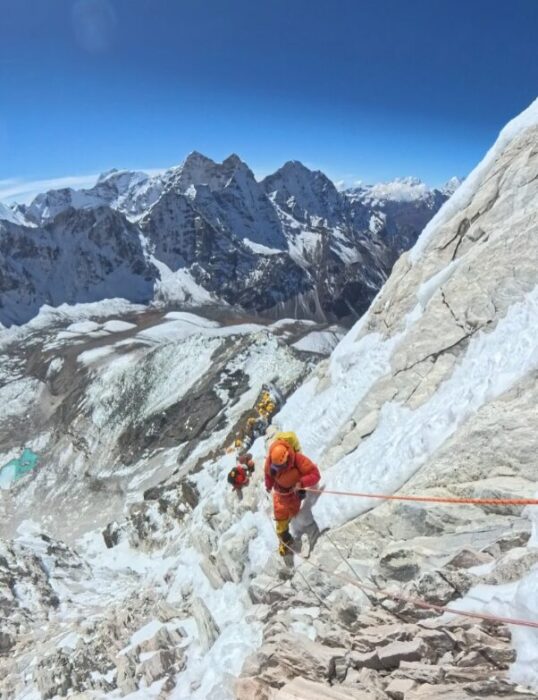
Climbers on their way to Camp 3 on Ama Dablam last year. Photo: 8K Expeditions
Recent risky rescue
Most incidents on Ama Dablam occur when climbers fall sick with AMS due to lack of acclimatization or suffer frostbite.
Climber and helicopter pilot Simone Moro performed a risky rescue near Camp 3 on Ama Dablam just last weekend. He had to keep the helicopter barely touching a snowy ridge on one skid for nearly two minutes while Sherpas loaded an exhausted climber inside. See video below.
Third casualty in spring 2025
Hornegger’s is the first death of the season on Ama Dablam, but not in Nepal’s mountains. Rima Rinje Sherpa and Ngima Tashi Sherpa died on April 7 in an avalanche on Annapurna as they carried loads of oxygen toward Camp 3.
